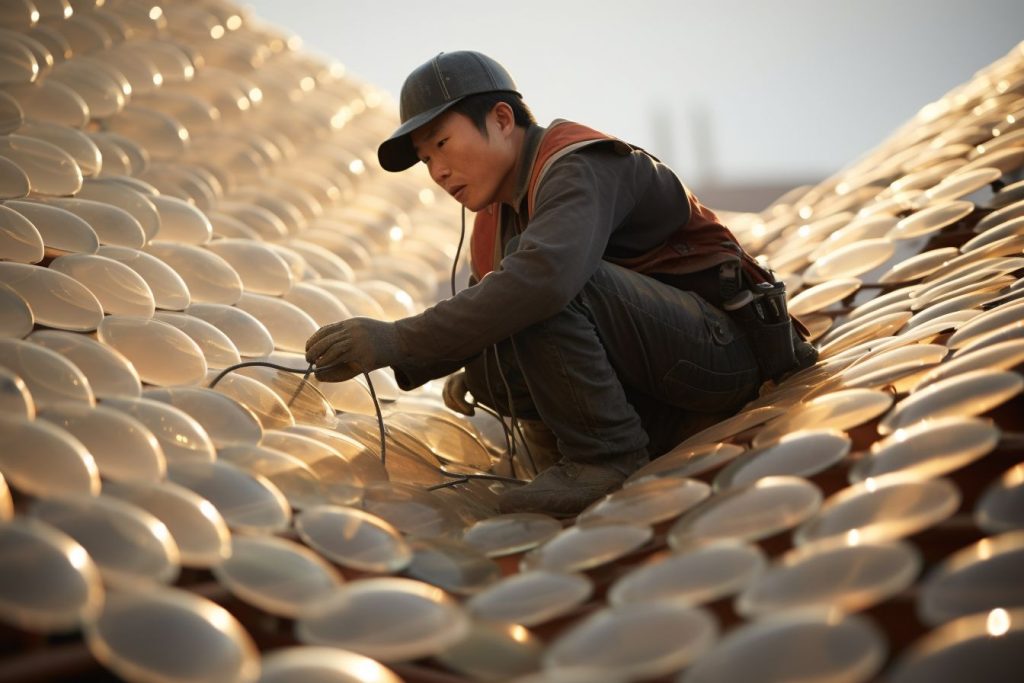Have you ever noticed unusual bubbles or blisters on your roof and wondered why they’re there? When air or moisture gets trapped between the roofing layers, these bubbles are more than just an eyesore.
This blog will explore in depth why these roof blisters form, their implications for your home, and how to address them appropriately. Let’s jump right in to keep that roof over your head as sturdy as possible!
Key Takeaways
- Bubbles on your roof are caused by trapped air or moisture between the layers of the roof or membrane and the roof deck.
- Excessive heat can lead to blistering on roofs, as it softens asphalt shingles and causes moisture to evaporate rapidly, creating gas buildup.
- Poor installation techniques can also contribute to roof bubble formation, so hiring a skilled professional is crucial.
- Roof bubbles can decrease the lifespan of your roof, lead to leaks and water damage, and compromise the structural integrity of your home.
Causes of Bubbles in Roofs
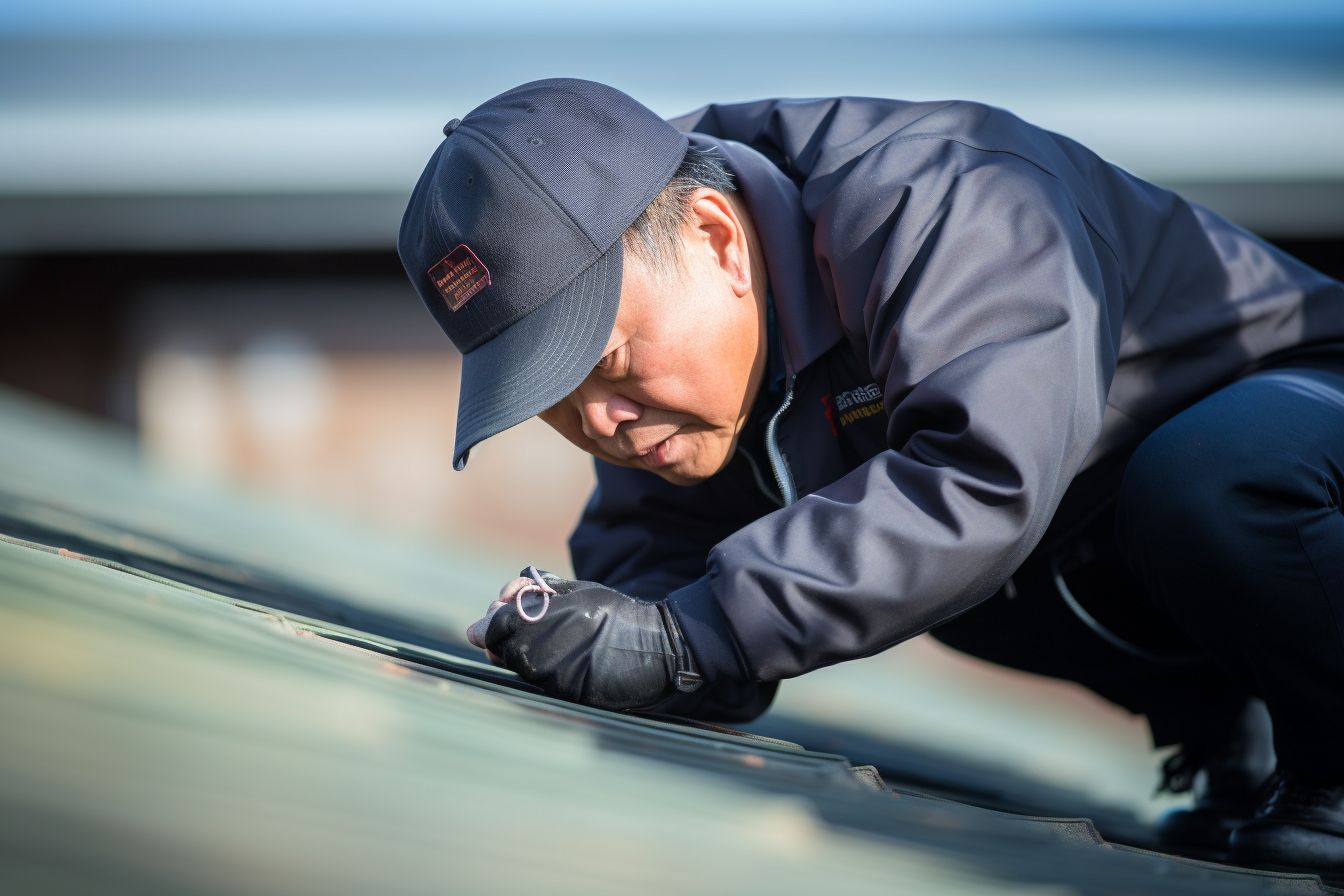
Blisters and bubbles can form on roofs when there is air or moisture trapped between the roofing layers or membrane and the roof deck.
Blisters and bubbles from air or moisture trapped between roofing layers or membranes and the roof deck
Blisters and bubbles on your roof can be a serious cause for concern. They typically form when air or moisture gets trapped between the roofing layers or the membrane and the roof deck.
This is especially common in built-up roof membranes and modified bitumen roofs. Asphalt shingles aren’t immune; gas, air, or moisture can get stuck, leading to unsightly asphalt blobs.
If these blisters are ignored, they may crack open, damaging the protective membrane of your roof. That’s why addressing this issue promptly is crucial to guard against further damage and preserve your home’s structural integrity.
Excessive heat damaging roofing materials
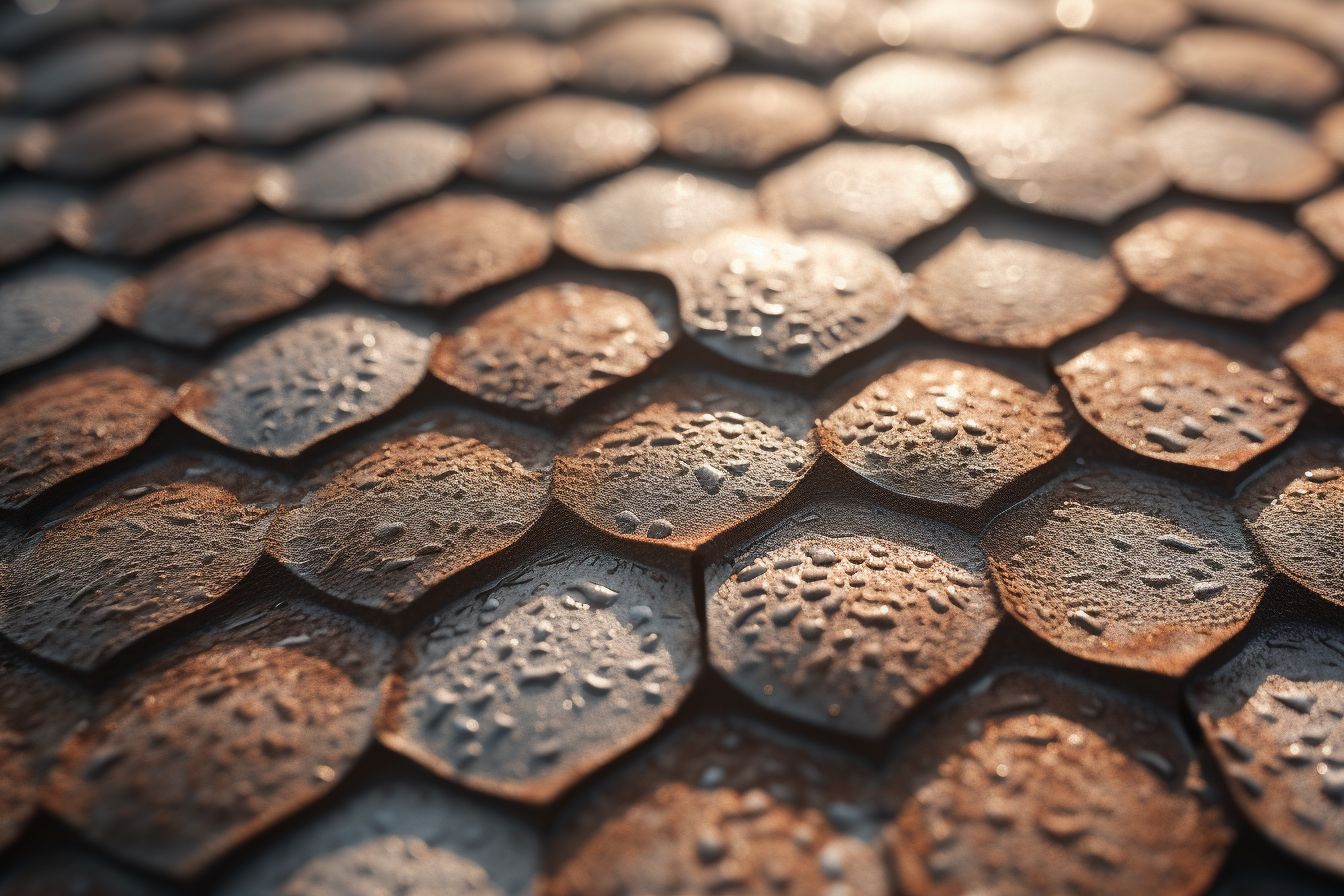
Excessive heat proves detrimental to roofing materials, often leading to the formation of bubbles on roofs. The scorching temperatures, coupled with direct sunlight, soften asphalt shingles and cause moisture in them to evaporate rapidly.
This process results in a gas buildup, creating unsightly blisters or bubbles on the roof.
Asphalt shingles consist of three layers: backing, asphalt, and granules – each susceptible to damage from overheating. Rising temperatures force entrapped moisture to the surface, accelerating the deterioration process for asphalt shingle roofs.
Prolonged exposure to high heat also drives these shingles into a repeated cycle of softening and hardening until they ultimately dry out and brittle; this brittleness then compromises their ability not just aesthetically but functionally too by making them highly susceptible to wind uplifts or physical damages that can lead directly into your home’s interior spaces.
Therefore, excessive heat isn’t just an outdoor nuisance – it’s a potential threat causing significant implications for every homeowner’s roof integrity!
Lack of shade causes direct sunlight to create small blisters
Direct sunlight plays a significant role in forming small blisters on roofs, especially with inadequate shade. The sun’s ultraviolet radiation relentlessly beats down on roofing materials.
No roof type is exempt from this solar exposure from conventional to flat and low-slope roofs. The intensity of these UV rays can gradually damage the surface, lead to heat buildup and instigate bubble-like formations known as blisters.
These blemishes appear round or oblong and may feel spongy due to their state of cure. Over time, without any mitigation efforts, such as providing sufficient shading or addressing underlying issues like excessive heat exposure, these small bubbles might expand further, leading to more severe problems for your roof integrity.
Poor installation leads to air bubbles.
Improper installation techniques can be a major culprit when air bubbles form on your roof. This can occur due to incorrect application, inadequate preparation, faulty bonding, insufficient sealing, or improper technique.
When the roofing materials are not properly installed, the air gets trapped underneath and causes these unsightly bubbles to form. So, it’s crucial to ensure that you hire a skilled professional who follows proper installation procedures and uses adequate adhesives to prevent this issue from occurring in the first place.
Implications of Bubbles in Roofs
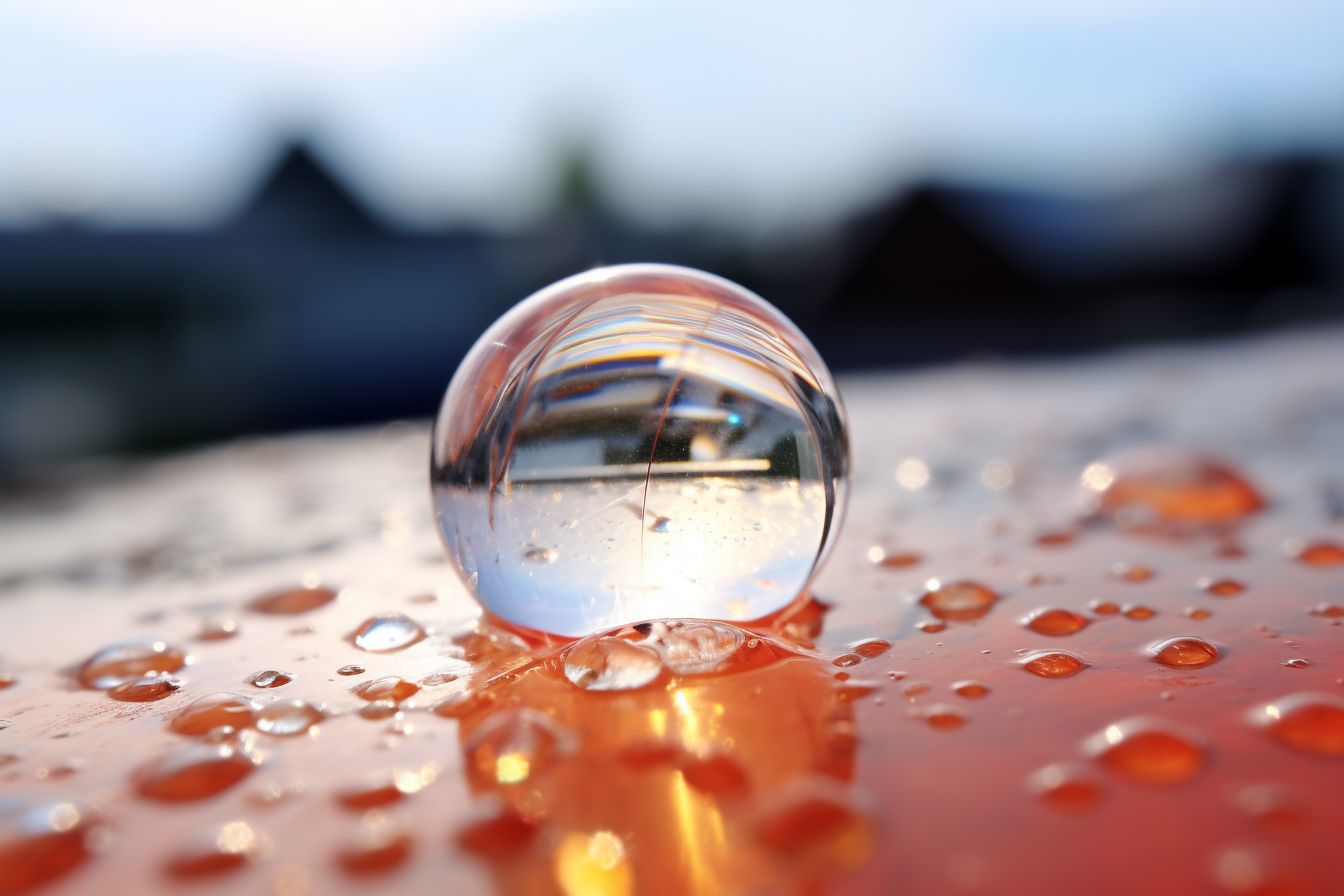
Bubbles in roofs can lead to decreased lifespan, leaks, and compromised structural integrity. Don’t ignore the warning signs – find out how to address this issue and protect your home.
Decreased lifespan of the roof
Roof blisters can significantly decrease the lifespan of your roof. These bubbles in the roofing material may seem harmless, but they can lead to serious issues over time. The presence of blisters indicates trapped air or moisture between the roof layers or between the membrane and the deck.
This trapped air or moisture weakens the roof’s integrity, causing it to deteriorate faster. If left unaddressed, these blisters can lead to coating degradation and potential leaks, further compromising your roof’s lifespan.
It’s essential to have a professional inspect and repair any blisters promptly to prevent further damage and ensure your roof lasts as long as possible.
Roofing professionals recommend addressing blistered roofs as soon as you notice them to avoid long-term consequences. By taking action early on, you can extend the life of your roof and save yourself from costly repairs down the road.
Regular maintenance and inspections play a crucial role in preventing bubbles from forming in the first place. Additionally, monitoring factors such as excessive heat exposure or lack of shade can help minimize blister formation by avoiding direct sunlight-related issues.
Potential for leaks and water damage
Bubbles in roofs can have serious implications, including the potential for leaks and water damage. When blisters or bubble-like protrusions appear on a roof, it indicates there may be water intrusion or moisture damage.
These bubbles can compromise the roof’s structural integrity and lead to costly repairs if left untreated. Blisters increase the risk of water leaks, which can cause further damage to insulation, ceilings, and walls.
It is crucial to address these issues promptly to prevent any long-term consequences and protect your home from extensive water damage.
The potential for leaks and water damage arises from heat expansion, shingle damage, and gutter problems caused by blistering roofs. Water intrusion through these bubbles can deteriorate roofing materials over time, weakening their ability to withstand harsh weather conditions.
Moisture infiltration into the underlying layers of roofing systems may also result in mould growth or rotting wood structures. Regular roof maintenance and inspections are essential for detecting and resolving any signs of bubbling before they escalate into more significant issues.
Compromised structural integrity
Blisters and bubbles on a roof may seem like cosmetic issues, but they can compromise the structural integrity of your entire building. When left unaddressed, these problems can lead to roof leaks, moisture infiltration, water damage, and even roof deterioration.
It’s essential to take action and resolve any bubble or blister issues promptly to ensure your property’s long-term stability and safety. Regular maintenance and inspections are key to identifying and addressing these concerns before they cause significant damage.
Solutions for Dealing with Bubbles in Roofs
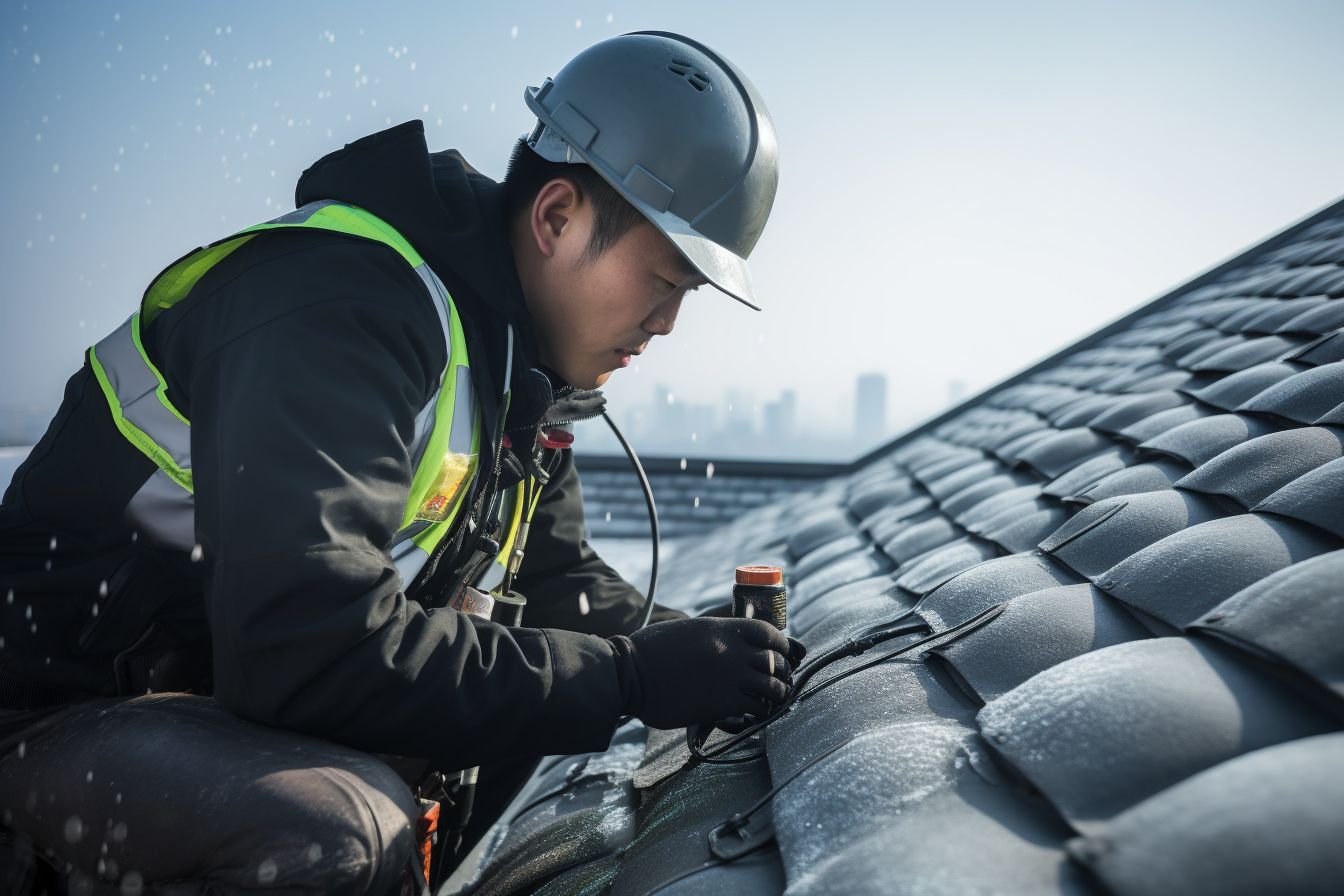
To address bubbles in roofs, it is important to seek professional inspection and repair services. Additionally, underlying issues such as moisture or heat exposure should be addressed, proper installation techniques should be used, and regular maintenance and inspections are crucial in preventing future problems.
Professional inspection and repair
Professional inspection and repair are crucial for identifying and addressing bubbles in roofs. It can help identify issues such as improper cleaning during installation, insufficient adhesive, roof age, and trapped moisture. Annual inspections are recommended to catch and address roof blisters before they become major problems. Additionally, professional inspection and repair can prevent roof blistering from causing the loss of shingle granules, which can be absorbed into the asphalt or fall off. EPDM rubber roofs may also develop bubbles or blisters due to excessive adhesive use or incorrect bonding methods, which can be effectively addressed through professional inspection and repair.
Addressing underlying issues such as moisture or heat exposure
To address underlying issues such as moisture or heat exposure to prevent bubbles in your roof, consider the following solutions:
- Ensure proper attic or crawl space ventilation to reduce humidity and prevent moisture buildup.
- Install insulation to regulate the temperature and minimize heat transfer between the roof and the interior of your home.
- Use weatherproofing materials and techniques during the installation or repair of your roof to create a barrier against water and air infiltration.
- Regularly inspect and maintain your roof to catch any signs of damage or weakness before they worsen.
- Address plumbing issues promptly to prevent leaks that can lead to water damage.
Proper installation techniques
Proper installation techniques play a crucial role in preventing bubbles in roofs. Here are some important steps to ensure a bubble-free installation:
- Thoroughly clean the roof surface before installing any materials.
- Use the correct adhesive during installation to create a strong bond between roofing layers.
- Avoid applying excessive heat during installation, as it can damage the roofing materials and lead to blister formation.
- Consider design considerations, such as ensuring proper slope and drainage to prevent water accumulation.
- Follow manufacturer guidelines for membrane installation, especially for rubber roofs, to prevent bubbles or blisters from forming.
Regular maintenance and inspections to prevent future issues
Regular maintenance and inspections are crucial in preventing future issues related to bubbles in roofs. Here are some steps you can take to ensure your roof stays bubble-free:
- Schedule regular roof inspections with a professional to identify potential issues before they become major problems.
- Keep up with routine maintenance tasks such as cleaning gutters, removing debris, and trimming overhanging tree branches.
- Address any signs of damage or wear on your roof promptly, such as loose shingles or cracked flashing.
- Ensure proper ventilation in your attic to prevent excessive heat buildup that can damage roofing materials.
- Apply preventative coatings or sealants to protect the surface of your roof from the elements.
- Consider investing in a cool roof system that reflects sunlight and minimizes heat absorption.
- Monitor the condition of your roof after severe weather events and take immediate action if any damage is detected.
How to Find the Right Professional for Roof Repair
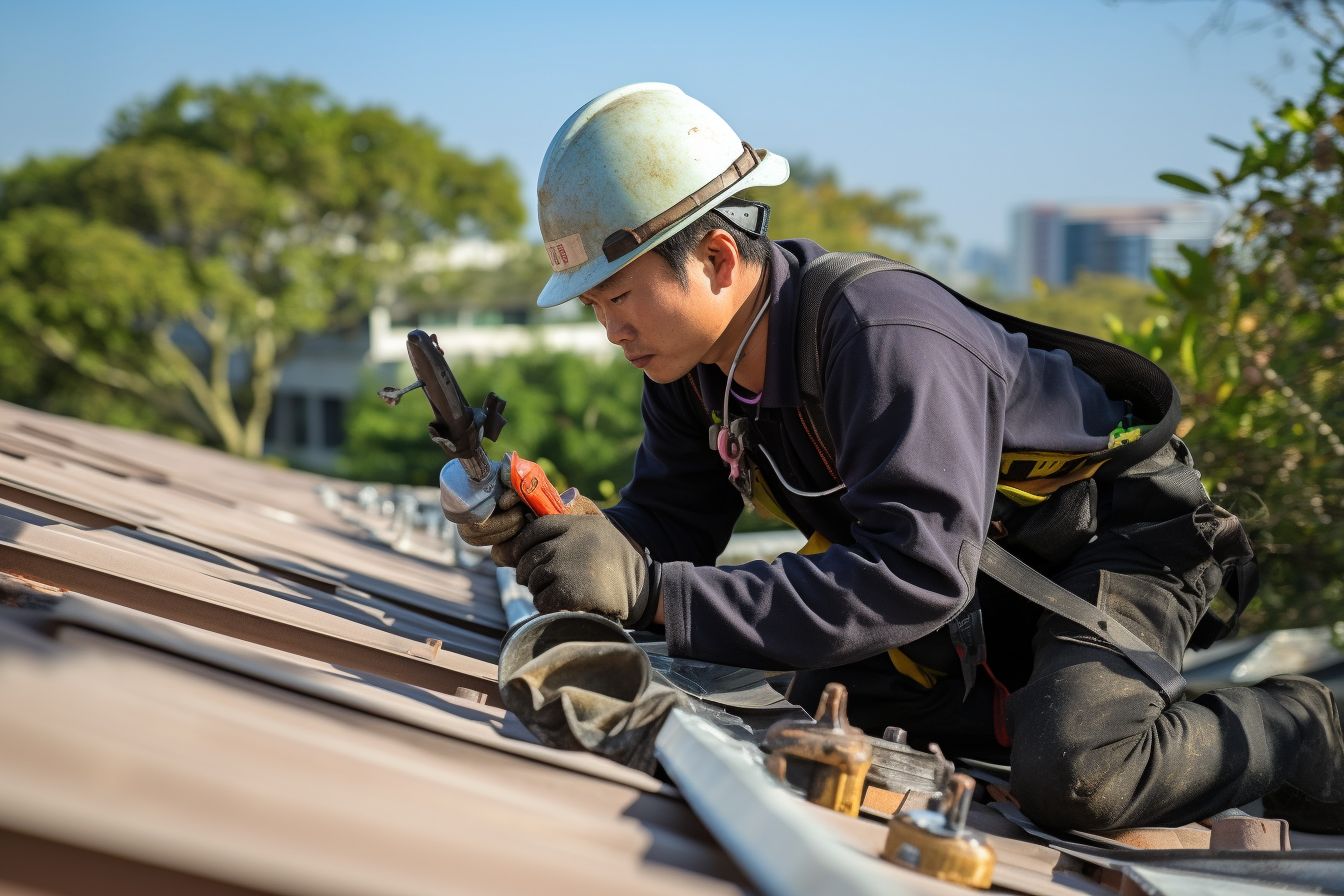
To find the right professional for roof repair, start by researching reputable roofing contractors in your area. Look for contractors with positive customer reviews and high ratings.
Ask friends, family, or neighbours for recommendations as well.
When contacting potential professionals, ask about their experience and qualifications in roof repairs. Inquire if they specialize in your roof type, such as flat or rubber roofs.
It’s also important to check if they are licensed and insured.
When meeting with a contractor, request a written estimate, including the work scope and cost breakdown. This will help you compare quotes from different professionals.
Remember to ask about warranties or guarantees on their workmanship and materials used. A reliable professional should offer some form of warranty to ensure the quality of their repair job.
By taking these steps and doing thorough research, you can find a qualified professional to provide effective solutions for your roof repair needs.
Conclusion
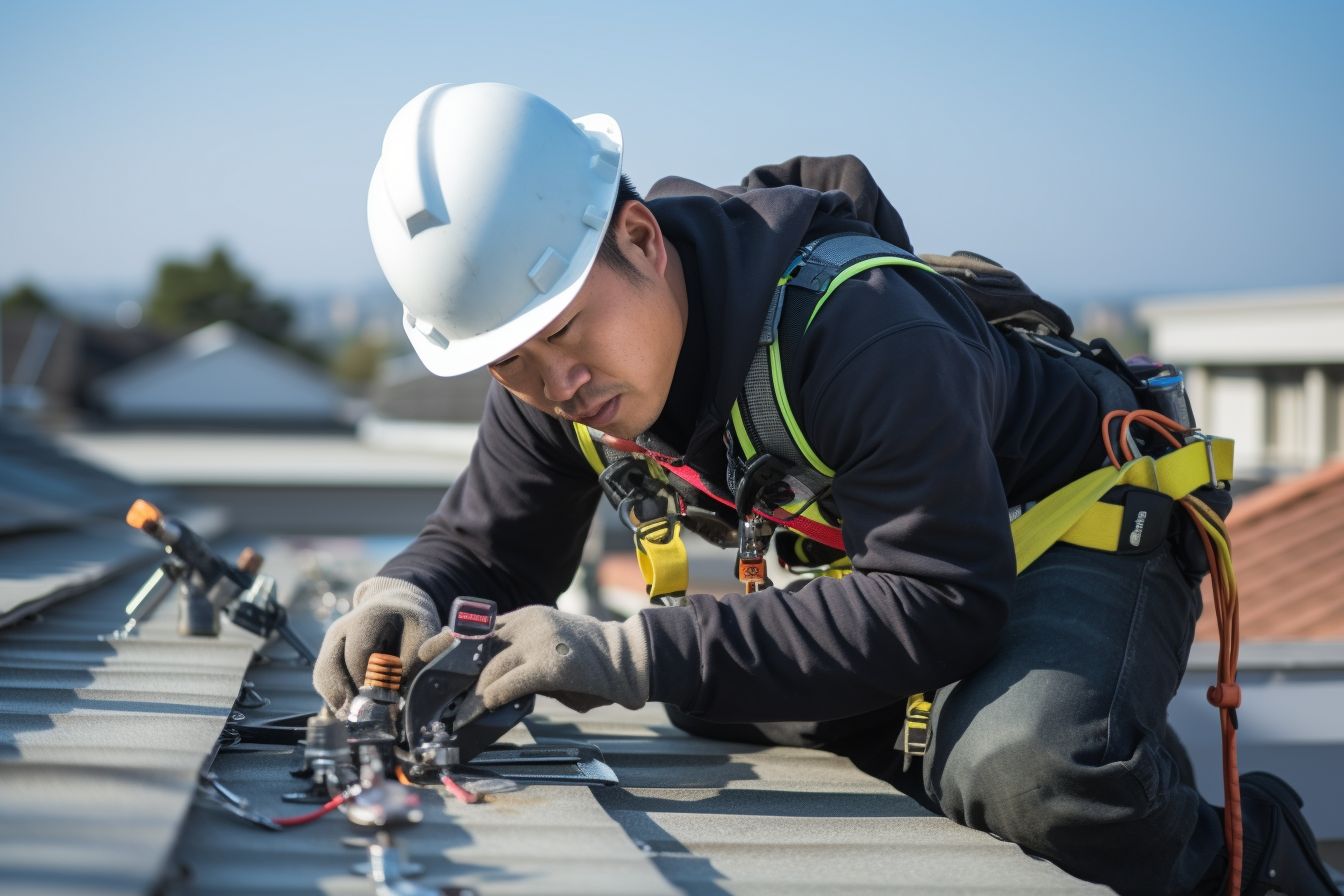
In conclusion, roof bubbles are often caused by trapped air or moisture between the layers of the roof or membrane and the roof deck. Excessive heat, poor installation, and lack of shade can also contribute to blistering.
It is important to address these issues promptly to prevent further damage and maintain the integrity of your roof.
FAQs
1. Why does my roof have bubbles?
Bubbles on your roof can be caused by trapped moisture or improper installation of roofing materials.
2. How do I know if the bubbles on my roof are a problem?
If the bubbles are soft and easily pressed down, it indicates trapped moisture, which can lead to further damage if not addressed. It’s best to have a professional inspect and repair it.
3. Can I fix the bubbles on my roof myself?
Fixing the bubbles on your roof yourself is not recommended, as it requires proper expertise and tools. Contacting a professional roofer is advisable for effective repair.
4. Will fixing the bubbles on my roof prevent future damage?
Fixing the bubbles will help prevent further damage, such as leaks and deterioration, ensuring your roof remains in good condition.
5. How much does fixing bubble issues on a roof cost to fix?
The cost of fixing bubble issues on a roof varies depending on factors like size, location, and extent of damage. To get an accurate estimate, consult with a professional roofing contractor.

